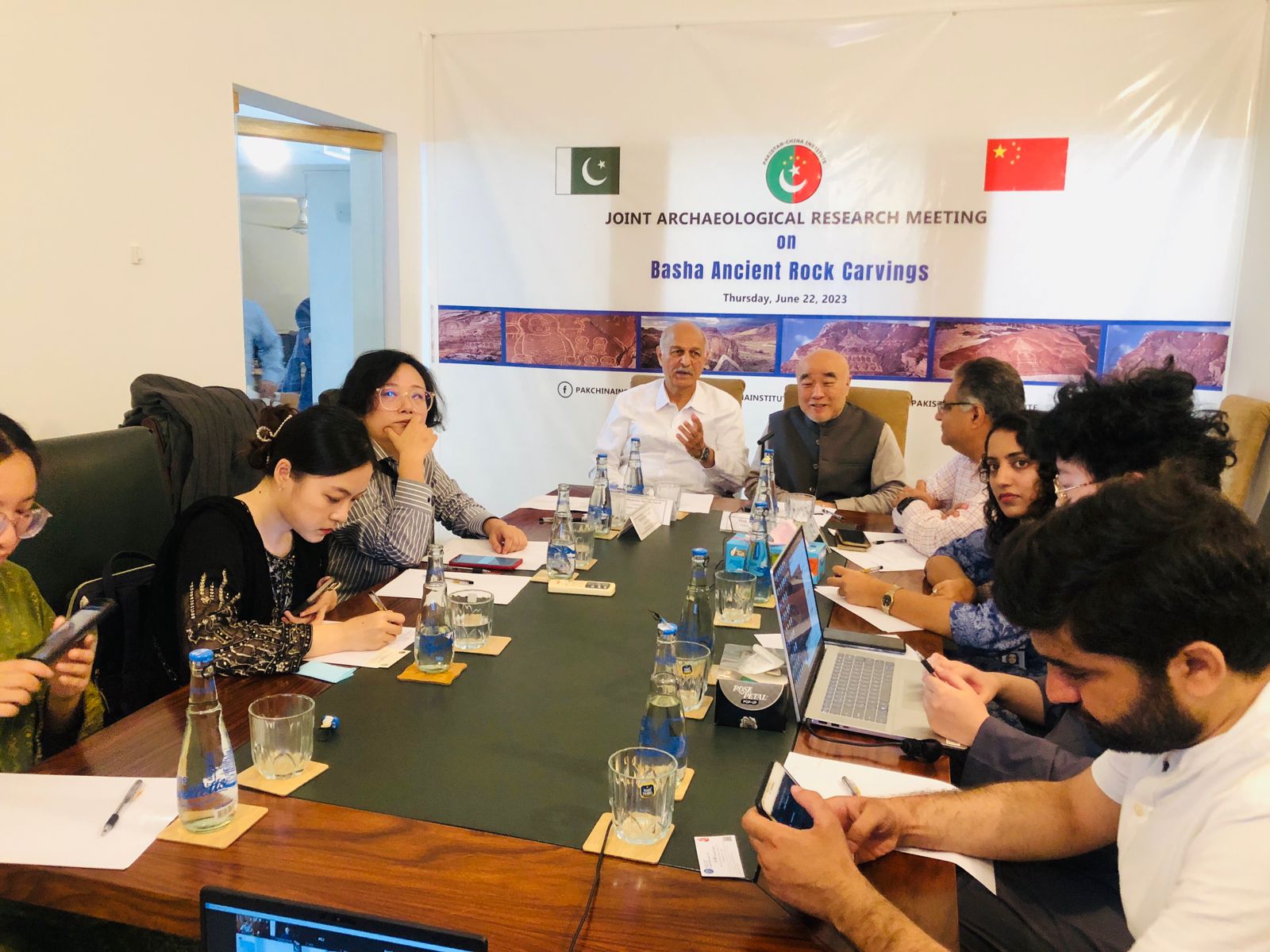Experts discuss practical measures for protecting Buddhist rock carvings in upper reaches of Indus River
Source : PCI Date : 22-06-2023
 |
"The Buddhist rock carvings and Chinese inscriptions in the upper reaches of the Indus River are not only precious historical and cultural heritage for the local people but also cultural heritage belonging to all of humanity," said Mushahid, Hussain Sayed, Chairman of the Senate’s Defense Committee & Pakistan- China Institute, in his speech at joint Archaeological Research meeting on Basha ancient Rock Carvings" held today.
The meeting was organized by the Pakistan-China Institute and chaired by Professor Li Xiguang, Director of Tsinghua University Center for Pakistan Cultural and Communication.
Mushahid Hussain Sayed stated, "Protecting the Buddhist rock art corridor in the upper reaches of the Indus River will be one of the most important initiatives for the builders of the China-Pakistan Economic Corridor and archaeologists from both countries to implement the 'Global Civilization Initiative' and promote the prosperity of the world's civilization garden."
The Buddhist rock carvings and inscriptions stretch over a distance of more than 100 kilometers in the upper reaches of the Indus River, which were discovered by Professor Ahmad Hassan Dani, the renowned Pakistani archaeologist, and German scholars during their exploration along the China-Pakistan Friendship Highway in the 1980s. In the summer of 1990, Professor Dani reported his findings in China for the first time, and Li Xiguang, then a journalist for Xinhua News Agency, reported this significant discovery to the world.
Prof. Dr. Ghani ur Rehman, the director of the Taxila Institute of Asian Civilizations, stated, "After Professor Dani discovered the rock art and inscriptions, German scholars conducted comprehensive archaeological documentation and classification of the rock art and inscriptions. However, until now, no archaeologist has proposed any feasible suggestions for protecting the Buddhist rock art and inscriptions in the upper reaches of the Indus River."
Professor Muzuddin, an archaeologist from northern Pakistan, conducted in-depth analysis from an archaeological perspective on the protection of the Buddhist rock art and inscriptions in the upper reaches of the Indus River, including issues related to underwater museums, open-air museums, the relocation of rock art, legal matters, and the concerns of the local people.
In his speech, Mustafa Hyder Sayed, Executive Director of the Pakistan-China Institute, looked forward to the support and assistance that various parties in Pakistan could provide for the protection of the rock art and inscriptions in the upper reaches of the Indus River.
Attendees at the meeting included faculty and students from the Pakistan Cultural Studies Center at the School of Journalism and Communication, Tsinghua University, Professor Kong Lingyun from the Department of Archaeology at Chongqing Normal University, as well as faculty and students from the Taxila Institute of Asian Civilizations, Quaid-i-Azam University.
